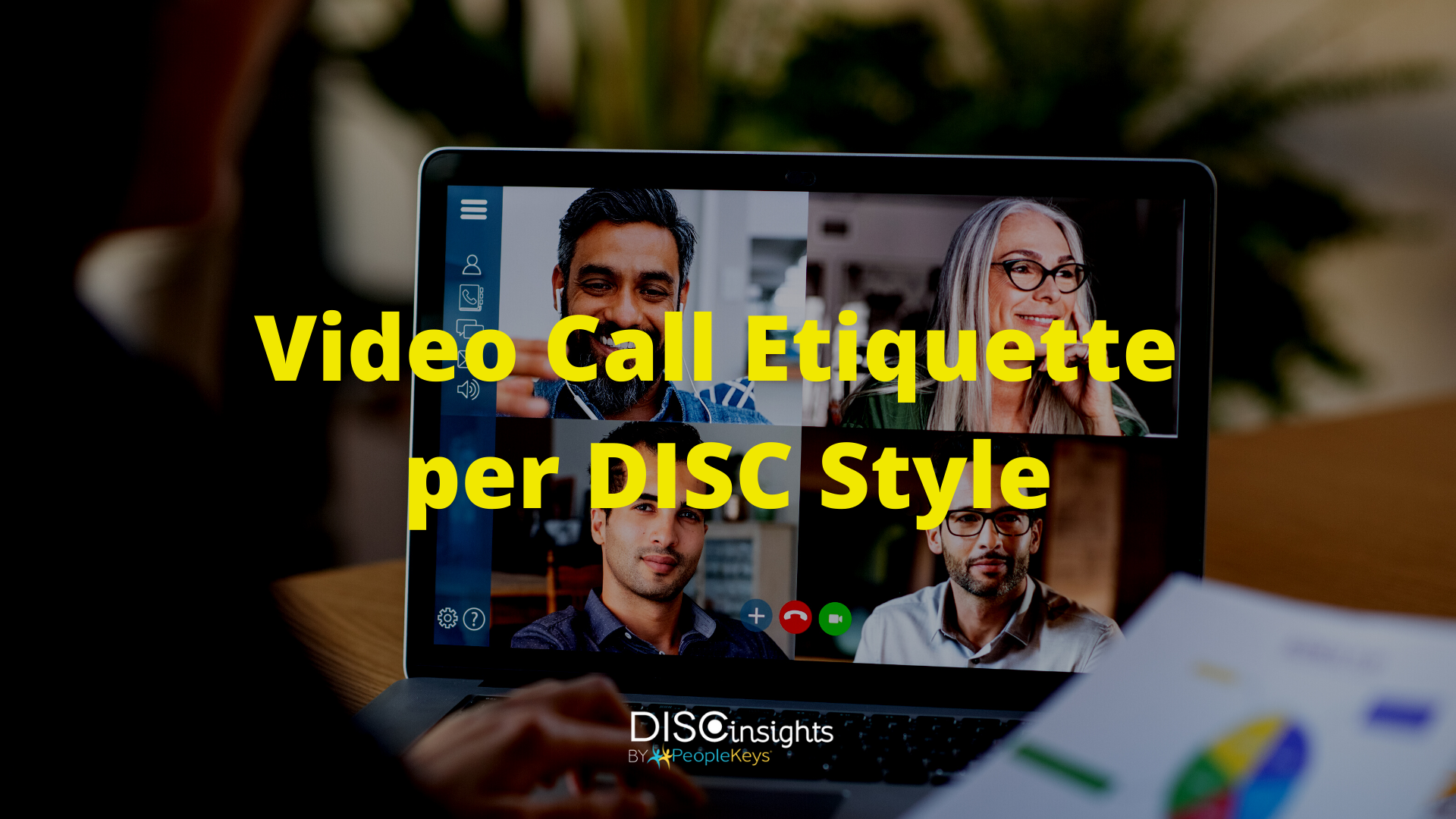- SHOP BY PRODUCT
- DISC TRAINING & CERTIFICATION TOOLS
- DISC RESOURCES
- BLOG
- SHOP BY PRODUCT
- DISC TRAINING & CERTIFICATION TOOLS
- DISC RESOURCES
- BLOG
- ALL ITEMS



Planning to host the perfect virtual meeting can lead to frustration and disappointment for anyone who fails to consider the various behavioral styles of those scheduled to attend. Aside from the typical meeting agenda, successful meetings begin with expectation management, meaning establishing a goal for the discussion and communicating that goal to participants to manage their expectations. In doing so, each unique behavioral style can appropriately adjust their approach while listening and engaging in virtual meetings. The following are some considerations for each DISC behavioral style whether you’re leading or hosting a virtual meeting, or participating as an attendee:
“D” Style Etiquette Considerations
Time is a currency for the “D” style. While they prefer to keep things short and sweet, keep in mind there will likely be requests for clarification, questions regarding tasks or projects, and people who like to share opinions or concerns. The challenge: you’re on video, and perhaps the meeting is also being recorded. Remember, as a “D” style, one of your strengths is directly confronting others when necessary, or maybe when becoming impatient. Others will see your body language or facial expressions shift when you begin to venture into this side of your personality. If you feel the meeting is getting off track or taking longer than planned, make the recommendation to refocus on the goal and offer time to address other topics of concern later. Others will appreciate getting back on topic, knowing they will have the opportunity to voice their concerns later.
“I” Style Etiquette Considerations
Meetings are often viewed as an opportunity to chat and connect with others for the “I” Style; however, they tend to get a bit off track or distracted. They struggle to convey information concisely and stick with the time constraints set for the meeting. Avoid dominating the time by dominating the conversation, and allow others time to ask questions or provide feedback and input related to the agenda. If you’re confronted about time management issues or straying off-topic, thank the member and refocus; it’s likely a “D” or C-style looking to spend as little time as necessary in a virtual meeting as they prefer to get back to working on their projects. There will be more opportunities for socialization!
“S” Style Etiquette Considerations
Known as the passive, people-oriented style, the “S” styles are likely to sit back and observe during virtual meetings, only engaging when directly addressed. However, even when virtual, the perceived lack of participation (passively listening while muted) or engagement can lead to frustration, especially when communicating with “D” or “I” style teammates. While your strengths are patience, listening, and a practical approach to problem-solving, others expect you to assert your input in a timely and direct manner. Don’t be afraid to unmute yourself and interject when you have something relevant to add to the conversation. Your participation will be appreciated just as much as the information or insight you provide.
“C” Style Etiquette Considerations
“C” styles are highly likely to come to the meeting, even virtually, with the agenda in hand (or in view) and prepared to discuss exactly what was outlined in the meeting agenda. They will take note when a new or unspecified subject is presented and perhaps even vocalize they weren’t prepared or notified of the deviation from the agenda. As a passive behavioral style, they are likely to be in observation mode until it is their turn to present information or called upon to interject. Also, a task-oriented style like the “D,” the “C” style may attempt to continue working on tasks, such as responding to e-mail or perhaps conducting online research, during the meeting. Consider the meeting an opportunity to gain clarity that may help you increase your productivity and meet deadlines in a timely manner. You likely possess valuable data others need but may get overlooked or missed if not fully engaged and present during the meeting.
All meeting participants expect to gain something by the end of the meeting that helps them advance. Don’t forget your valuable input requires active participation on your end, so you need to be engaged during a virtual meeting. Each personality style may approach their virtual communication a bit differently. Still, each team member brings strengths, when combined, keep the organization moving in the direction of success.

© PeopleKeys. All Rights Reserved
WORKING DAYS/HOURS
Mon - Fri / 8:30AM - 5:00PM EST
